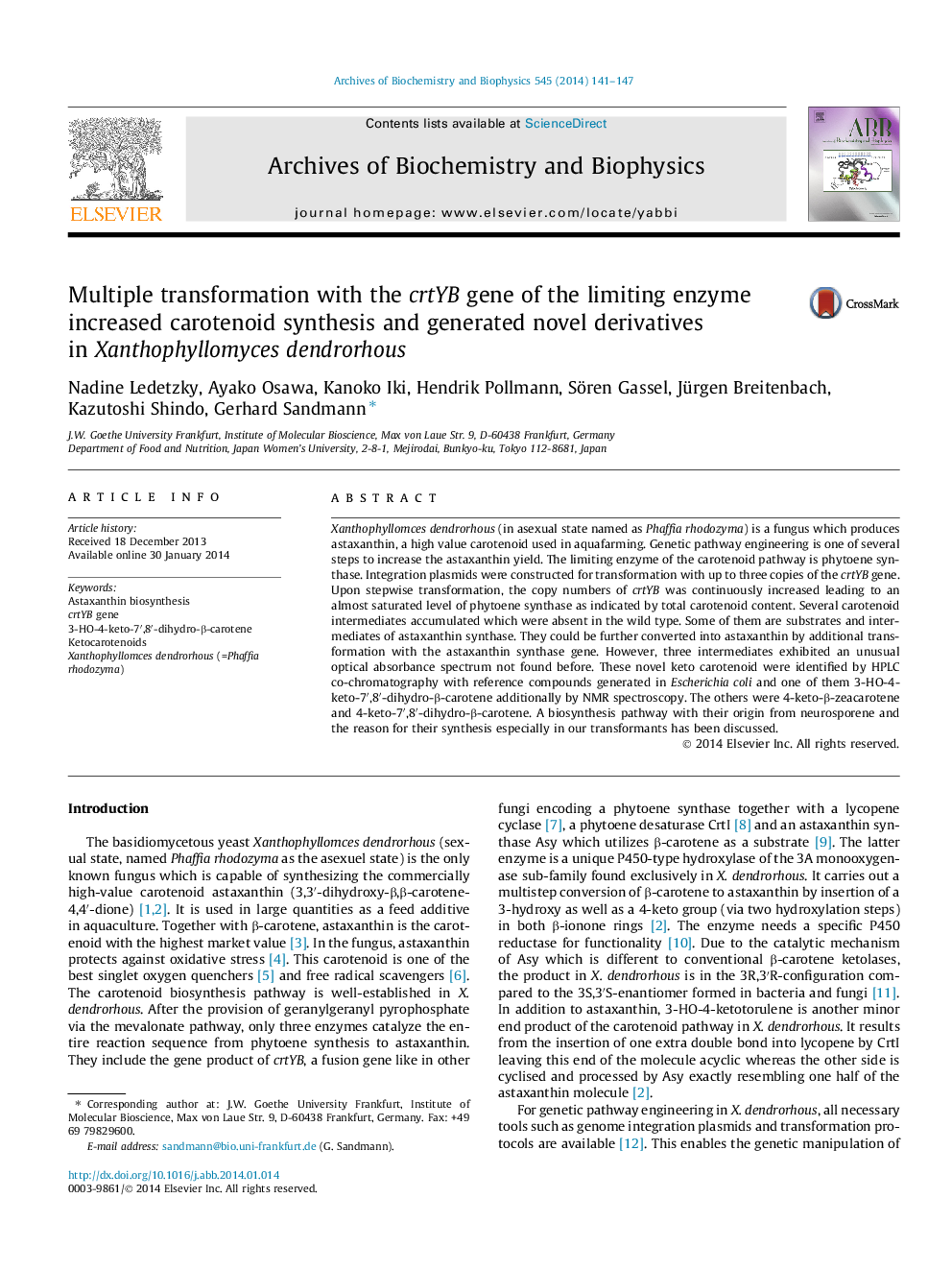| Article ID | Journal | Published Year | Pages | File Type |
|---|---|---|---|---|
| 1925261 | Archives of Biochemistry and Biophysics | 2014 | 7 Pages |
•Carotenoid synthesis was increased by genetic pathway engineering with the crtYB gene.•Saturation was reached by integration of three copies into the genome.•Due to this metabolic pressure, three novel carotenoid intermediates accumulated.•These keto carotenoid were identified by HPLC co-chromatography and NMR spectroscopy.
Xanthophyllomces dendrorhous (in asexual state named as Phaffia rhodozyma) is a fungus which produces astaxanthin, a high value carotenoid used in aquafarming. Genetic pathway engineering is one of several steps to increase the astaxanthin yield. The limiting enzyme of the carotenoid pathway is phytoene synthase. Integration plasmids were constructed for transformation with up to three copies of the crtYB gene. Upon stepwise transformation, the copy numbers of crtYB was continuously increased leading to an almost saturated level of phytoene synthase as indicated by total carotenoid content. Several carotenoid intermediates accumulated which were absent in the wild type. Some of them are substrates and intermediates of astaxanthin synthase. They could be further converted into astaxanthin by additional transformation with the astaxanthin synthase gene. However, three intermediates exhibited an unusual optical absorbance spectrum not found before. These novel keto carotenoid were identified by HPLC co-chromatography with reference compounds generated in Escherichia coli and one of them 3-HO-4-keto-7′,8′-dihydro-β-carotene additionally by NMR spectroscopy. The others were 4-keto-β-zeacarotene and 4-keto-7′,8′-dihydro-β-carotene. A biosynthesis pathway with their origin from neurosporene and the reason for their synthesis especially in our transformants has been discussed.
